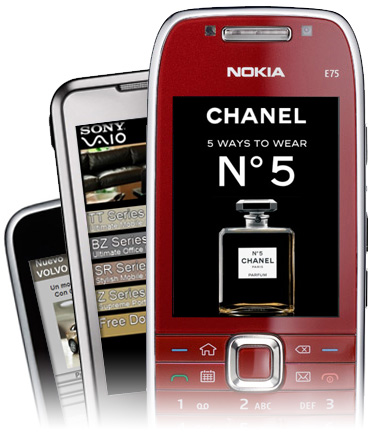Google considers web advertising on mobile devices extremely effective.

Google has recently conducted a study that advertisements that are shown to a mobile device user who surfs the web is much more effective than regular contextual ads that a user sees on a PC display. Probably, experts make the assumption that this situation is explained by the fact that users using the mobile Internet often search for information of a local nature (the nearest restaurant, cinema, pizzeria, shop, etc.).
According to the study, which was discussed above, about 42 percent of mobile device users click on ads that they like. Of these 42, about 49% buy what they see in advertising, 35% visit the advertiser's website, 27% call the advertiser for more information.
')
According to another study, about 49% of mobile phone users compare prices for various products using the mobile Internet, 44% request information on what they see on the Web, 34% view what else a store in which there is a person can offer. Google even coined the term “new mobile customer” (new smartphone consumer).
Google advertising experts believe that many smartphone owners are not yet “mobile buyers,” but new marketing technologies can help make them so. For example, you can use various technologies to encourage users, discounts and more.
And so far, as can be understood from a corporation survey, mobile advertising is a virtually untouched area, since so many large advertisers (more than 79% of top advertisers, according to the study, are likely advertisers who participated in Google’s research itself) They do not have a site optimized for display on a mobile device screen. Yes, most sites and so more or less look decent on the displays of mobile devices, but still this is not what the smartphone user needs. Yes, and advertising, which normally looks on the computer screen, will not necessarily be displayed on the display of a mobile device (especially for Flash-animations).
Some marketers have doubts about the findings that Google experts make. The fact is that now the majority of smartphone owners are more or less well-to-do people (yes, there are students who take a loan for a year and a half to the device they like, but there are not so many) who can pay for what they like and shown on mobile device displays.
But after mass distribution and cheapening of communicators, smartphones and other complex mobile devices, it may happen that the owners of smartphones and communicators are not very wealthy people who have paid the last money for the device and who are not able to buy what they want.
In any case, the mobile web advertising market is indeed a promising and virtually unaffected business segment with which you can and should work.
Via yahoo
Source: https://habr.com/ru/post/118295/
All Articles